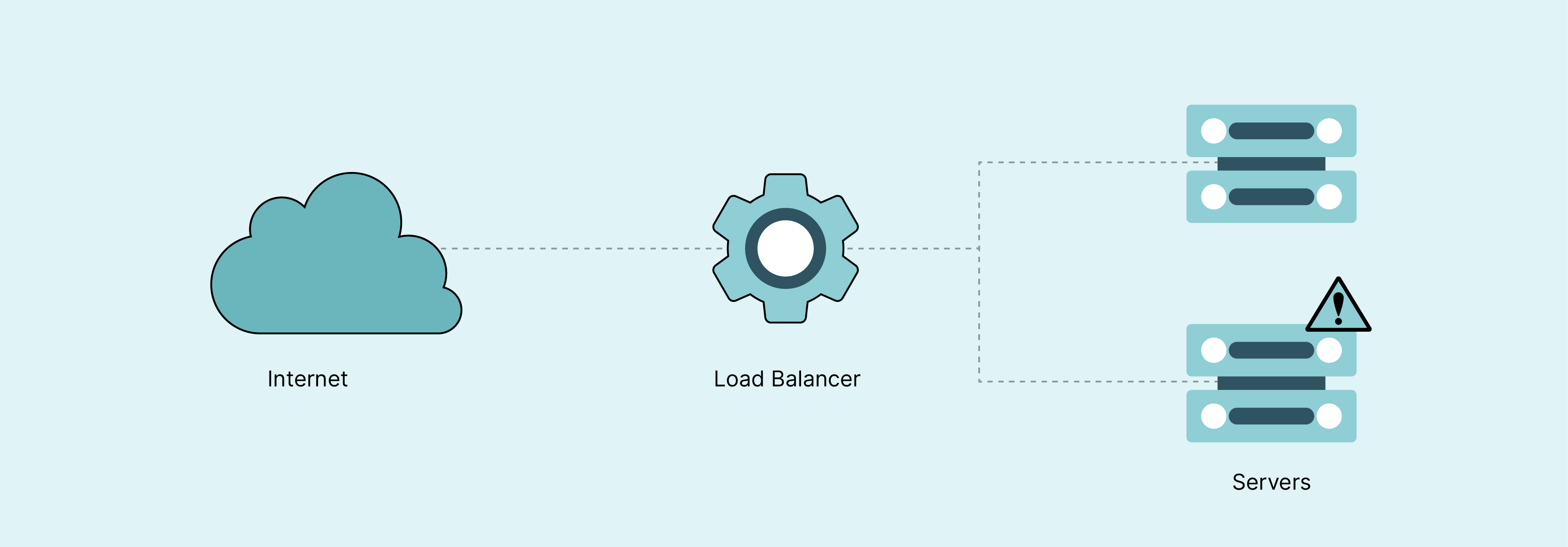
Magento 2 Web Hosting: 11 Strategies To Handle Traffic
Need steady performance even during high visitor influx? A dependable Magento 2 web hosting provides high speed and stability. It also meets Magento 2's technical needs, like the PHP version and database support. This guide outlines 12 effective strategies to manage traffic spikes for Magento 2 web hosting. It will also cover how to choose the best Magento 2 web hosting provider to minimize downtime.
Key Takeaways
-
Discover various Magento 2 web hosting types. It includes Shared and Dedicated Hosting, for maximum control and performance.
-
Explore 11 key strategies for handling traffic spikes on Magento 2 web hosting. Ensure optimal performance during peak periods.
-
Learn how to choose the best Magento 2 web hosting provider. Consider factors like scalable infrastructure, performance, etc.
-
Explore the benefits of cloud hosting for Magento 2 stores.
-
Discover the importance of scalability, performance, security, uptime, and support.
-
Choose the right hosting provider for your Magento 2 store.
Types of Magento 2 Web Hosting
1. Shared Hosting
Shared Hosting is a cost-effective option where multiple websites are on a single server. They share bandwidth, disk space, and CPU resources.
2. Dedicated Hosting
Dedicated Hosting provides a server solely dedicated to a single customer. It offers maximum control, security, and performance, as all the server’s resources are allocated to one site.
3. VPS Hosting
VPS Hosting offers a middle ground between Shared and Dedicated Hosting. It provides virtual partitions on a server, giving each user dedicated resources.
4. Cloud Hosting
Cloud Hosting is a scalable, flexible hosting solution. It distributes your Magento 2 store across multiple servers in the cloud.
11 Key Strategies To Handle Traffic on Magento 2 Web Hosting
1. Caching Mechanisms
Caching is a technique that temporarily stores copies of files or web pages to serve them quickly to users upon request. Caching static content like images, CSS and JavaScript does not have to be repeatedly fetched from the server. It reduces latency and enhances the user experience.
2. Content Delivery Network (CDN)

A CDN is a network of servers distributed globally. It is designed to deliver web content to users more quickly by reducing the physical distance between the server and the user. It improves site speed and reduces the strain on the original hosting server. CDNs like MGT Commerce, Cloudflare, or CloudFront help distribute static content.
3. Set Up Load Balancing

Load balancing is a technique that distributes incoming network traffic across multiple servers. It ensures that no single server bears too much load, which can degrade performance or lead to outages. Load balancing helps maintain optimal site performance and availability by evenly spreading traffic.
4. Monitor Traffic Trends
Monitoring traffic trends allows website owners to anticipate spikes in traffic. Businesses can identify peak periods by analyzing traffic patterns. They can also plan for increased server capacity or resource allocation. This proactive approach ensures the Magento 2 web hosting environment is always prepared. It handles an influx of visitors without hiccups.
Traffic monitoring tools provide valuable insights into:
-
User behavior
-
Source of traffic, and
-
Peak usage times
This information allows businesses to optimize their hosting resources. It also helps them tailor their Magento marketing and sales strategies to align with user activity.
5. Stress Test the Infrastructure

Stress testing involves simulating high traffic levels. It determines how much load a website can handle before its performance is negatively impacted. For Magento 2 sites, conducting regular stress tests helps identify potential bottlenecks. It enables businesses to adjust to ensure the site remains responsive under heavy load.
It helps plan resource allocation even as traffic volumes increase. It also provides a seamless user experience.
6. Optimize Database Queries
Optimizing database queries improves the performance of a Magento 2 website. Efficient queries reduce the time it takes to retrieve data from the database. It speeds up page loads and enhances the Magento user experience.
For high-traffic sites, optimized queries ensure the database can handle multiple requests. It involves analyzing and refining the queries. It then eliminates unnecessary data retrieval and ensures indexes are used effectively.
Regularly review the database structure and make adjustments as needed. It includes cleaning up old data and optimizing tables. Also, ensure that the database server’s configuration is tuned to the specific needs of the Magento 2 application. Proper database optimization can significantly reduce the load on the server. It allows it to process requests more efficiently.
7. DevOps Expertise

Selecting a hosting provider offering DevOps expertise can affect how well a Magento 2 site performs under heavy traffic. Providers with DevOps capabilities bring a wealth of knowledge in:
-
Automation
-
Continuous integration, and
-
Deployment
Their expertise helps set up a hosting environment that can automatically adjust resources. They also deploy updates without downtime and ensure the infrastructure always meets the site’s demands.
It helps to free up resources to focus on business growth rather than infrastructure management.
8. Compression and Minification
Compression and minification are processes that reduce the size of CSS, JavaScript, and HTML files. It reduces the data transferred between the server and the user’s browser. This reduction in data size means pages load faster.
Compression involves reducing the file size without removing any code. Minification removes unnecessary characters, such as spaces and comments, from the code.
It significantly decreases Magento page load times and bandwidth usage. Faster page loads keep users engaged. This is especially true during high-traffic periods when server resources are heavily used.
9. Use Efficient Image Files

Efficiently sized images reduce the amount of data that needs to be loaded. It speeds up page response times. Modern image formats like WebP offers compression without losing quality.
Magento Image optimization involves more than choosing the right format. It also includes resizing images for different devices and implementing lazy loading. It makes the site more responsive for users and reduces the strain on web hosting resources during traffic spikes.
10. Regularly Update and Maintain
Regular updates ensure the site benefits from:
- Latest features
- Performance improvements, and
- Magento security patches
Updates also include optimizations that reduce resource consumption and improve response times.
Regularly monitor, troubleshoot, and optimize all aspects of the hosting environment. This proactive approach helps identify potential issues before they impact performance. It ensures that the Magento 2 site remains fast, secure, and capable of handling traffic spikes.
11. Implement Effective Scaling Strategies
Scaling your Magento 2 web hosting setup is essential to handle traffic surges effectively. You can do this in two ways:
1. Vertical Scaling (Scaling Up)
It involves upgrading your existing server's resources (RAM, CPU, etc.) to handle increased loads. It's a straightforward approach but has limitations based on the maximum capacity of the server.
2. Horizontal Scaling (Scaling Out)
This strategy involves adding more servers to your hosting environment. It helps distribute the load among them. It’s more complex but offers better flexibility and reliability. It helps handle unpredictable traffic spikes.
Hosting Considerations for Magento 2 Web Hosting
1. Scalable Infrastructure

A hosting solution with scalable infrastructure allows for adjusting resources. It includes:
-
Processing power
-
Memory, and
-
Bandwidth in response to the website’s needs
This flexibility helps maintain site performance during peak traffic times. Magento 2 scalability ensures that the hosting environment can expand its capacity seamlessly. It prevents site slowdowns or crashes when user demand increases.
It is cost-effective and ideal for businesses that experience fluctuating Magento traffic. It ensures they can access additional resources and scale down during quieter periods to manage costs. Hosting providers like MGT Commerce, Cloudways, and Siteground offer auto-scaling for Magento.
2. Performance
The performance of your Magento 2 store directly impacts user experience and sales. Factors such as page load speed and server response time are critical. Look for hosting solutions that offer optimized server configurations. It includes SSDs and caching mechanisms like Varnish.
Performance-enhancing technologies such as Nginx or Apache can significantly improve site speed.
3. Security
Security protects sensitive customer and business data from breaches and attacks. Look for hosting providers that offer security features. It includes firewalls, SSL certificates, DDoS protection, and regular security patches.
PCI compliance is also important for ecommerce sites to process payments safely.
3. Uptime
Uptime guarantees measure reliability. It indicates the percentage of time the hosting service is operational and accessible. High uptime rates ensure your site is available to customers around the clock, minimizing the risk of lost sales due to downtime. Look for hosting providers with a strong uptime guarantee backed by data centers with redundant power and networking.
4. Support
Quality Magento customer support can significantly reduce the impact of any issues that arise. A hosting provider’s support team should be knowledgeable about Magento 2. It should offer timely assistance via phone, chat, or email. It ensures quick resolutions to technical problems, minimizing potential downtime or performance issues.
5. Backup and Recovery
Regular Magento backups and an efficient recovery plan safeguard your site’s data. It prevents data loss due to hardware failures, cyberattacks, or human error. Hosting plans should include automated backup services. A clear and straightforward recovery process helps restore your site quickly.
6. Developer Friendly Tools
Access to developer-friendly tools and services can facilitate site management, updates, and customizations. Look for features like SSH access, staging environments, and support for version control systems like Git. These features are valuable for maintaining and developing your site.
7. Hosting Environment

The hosting environment should be optimized for Magento 2 requirements. It should support PHP versions, databases like MySQL, and search technologies like Elasticsearch. Compatibility ensures smooth operation and full utilization of Magento 2’s features.
8. Price
While cost should not be the sole deciding factor, finding a hosting solution that balances price and value is important. Consider the total cost of ownership. It includes any additional fees for security, scalability, and support services. These factors help ensure the hosting plan fits your budget.
FAQs
1. What factors should business owners consider when choosing a web hosting for Magento 2?
When selecting a web hosting company, server requirements and performance must be considered. Look for security features like firewalls and SSL certificates. It should also include the provider’s expertise in Magento hosting.
2. How can merchants benefit from using cloud hosting platforms for their Magento 2 store?
Merchants leveraging cloud hosting platforms experience enhanced scalability. It helps with convenient server monitoring and efficient autoscaling. It ensures optimal performance during traffic spikes. Magento hosting providers like MGT Commerce offer a reliable and flexible solution.
3. What steps should store owners follow when migrating their Magento 2 site to a new hosting provider?
Site migration involves careful planning. Begin by selecting a suitable hosting provider, ensuring compatibility with Magento 2 requirements. Execute a thorough backup and install necessary plugins and themes. Meticulously test the new environment before finalizing the migration.
4. Are there specific considerations for beginners when choosing web hosting plans for their Magento 2 store?
For beginners, it’s advisable to opt for user-friendly hosting services. It should include features like easy installation options, cache management, and beginner-friendly interfaces. Reliable hosting companies often offer trial periods. It allows users to assess the platform’s suitability for their needs.
5. What are the key differences between Magento 2 extensions and plugins?
In e-commerce development, extensions and Magento plugins serve similar purposes but have differences. Extensions are specific to Magento, while plugins are more generic. Developers should carefully choose based on the desired functionalities. Consider factors like compatibility, performance, and support from the Magento community.
6. How does the choice of server location impact the performance of a Magento 2 store for global customers?
The server location significantly influences loading times for global customers. Select a server location strategically based on your target audience. This approach minimizes latency. It also provides a seamless shopping experience regardless of customers’ locations.
7. What are the recommended server upgrades for Magento 2 store owners looking to enhance performance?
Consider increasing RAM, optimizing storage solutions, and exploring options for server upgrades. These enhancements can lead to improved page load speeds and better customer experiences. It offers e-commerce stores a more competitive edge in the market.
Summary
Magento 2 web hosting provides a reliable base. It accommodates the demands of an online store, ensuring a seamless experience for visitors.
Recap on what's covered in the article:
-
Understand shared, dedicated, VPS, and cloud hosting differences.
-
Use 11 strategies like caching and CDN for speed.
-
Choose providers based on scalability, performance, security.
-
Cloud hosting offers flexibility and scalability.
-
Optimize databases, images for quick loading.
-
Regular updates and maintenance are crucial.
-
Scale up or out as needed.
Explore Magento server hosting solutions that align with your needs and handle traffic spikes.



